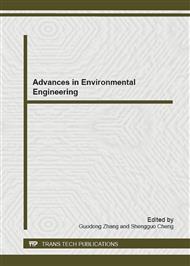p.690
p.697
p.701
p.705
p.709
p.716
p.720
p.724
p.728
Study on the Effect of Debris Flows from Guanba River on Qiong Lake, Sichuan, China
Abstract:
Sediment deposition caused by debris flows and floods is an important process controlling the evolution and regression of lake, and even a pervasive environmental problem. Qiong Lake is regards as a “bright phearl of the altiplano” in the Yunnan Plateau, and because debris flows construct a vital links between mountain slope and Qiong Lake, so the debris flows drove by rainfall will control the evolution rule of rift lakes. Based on the data of lake shorelines of Qiong Lake, it was found that the shoreline was push forward by 665 m since 1998. In addition, in the recent 30 years, turbidity current deposits have generated underwater levee and other landscapes in the deep water area of Qiong River. This paper has analyzed the matter migration process induced by debris flows, and presented the regime change pattern of debris flow along river channel and corresponding mechanical mechanism, mainly revealed the submarine transportation and deposition pattern of debris flow. The above studies provide a helpful way of comprehending the formation mechanism of turbidity flow induced by debris flow, and the transportation pattern. Based on severe sediment deposition catastrophes in this kind of rift lakes from debris flows and floods, disaster mitigation must be planned and appropriate engineering countermeasures put in place as soon as possible.
Info:
Periodical:
Pages:
709-715
Citation:
Online since:
November 2012
Authors:
Keywords:
Price:
Сopyright:
© 2012 Trans Tech Publications Ltd. All Rights Reserved
Share:
Citation:


